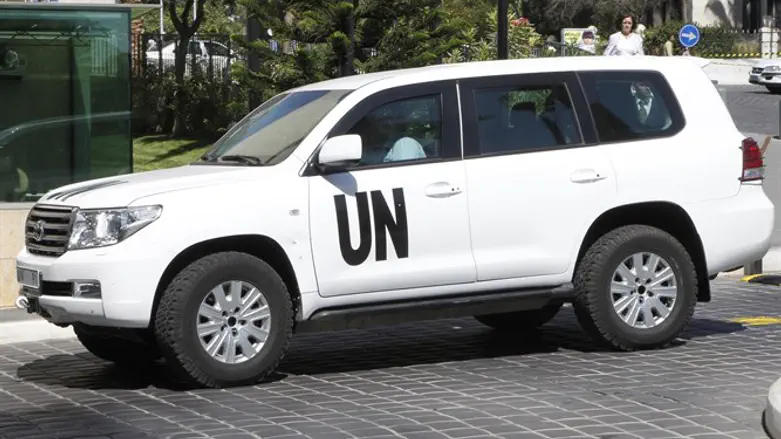
A UN investigation has determined that Syrian President Bashar Al-Assad's forces carried out at least two chemical attacks in Syria and that Islamic State (ISIS) jihadists used mustard gas as a weapon, according to a report seen by AFP on Wednesday.
The panel was able to identify the perpetrators of three chemical attacks carried out in 2014 and 2015, but was unable to draw any conclusions in the other six cases that it has been investigating over the past year, according to the news agency.
The report from the Joint Investigative Mechanism (JIM) found that the Syrian regime dropped chemical weapons on two villages in northwestern Idlib province: Talmenes on April 21, 2014 and Sarmin on March 16, 2015.
In both instances, Syrian air force helicopters dropped "a device" on houses that was followed by the "release of a toxic substance", which in the case of Sarmin matched "the characteristics of chlorine".
The panel found that ISIS "was the only entity with the ability, capability, motive and the means to use sulphur mustard" in an attack on the town of Marea in northern Aleppo province on August 21, 2015.
Syria agreed to destroy its chemical weapons in 2013 under a deal brokered by Moscow and Washington, but the Organization for the Prohibition of Chemical Weapons (OPCW) has since found chlorine has been "systematically and repeatedly" used as a weapon.
Government and opposition forces in Syria have denied using chlorine and have accused each other of doing so.
The government in Damascus argues that claims that it used chemical weapons are only meant to " serve political agendas".
Despite the Assad regime's repeated denials that it has used chemical weapons in Syria, the report said that in the three cases it had "sufficient information to reach a conclusion on the actors involved."
The JIM was set up by the Security Council a year ago to investigate the use of chemical weapons and for the first time to determine who is responsible for the attacks.
Most of the cases investigated pointed to the alleged use of chlorine gas in barrel bombs dropped from helicopters.
The United States, Britain and France had long maintained that only the regime has helicopters, but Russia, Damascus' ally, insisted that there was no concrete proof that Assad's forces carried out the attacks.
The report "states clearly that the Syrian regime and Daesh have perpetrated chemical attacks in Syria," French Deputy Ambassador Alexis Lamek told reporters, using the Arabic acronym for ISIS.
"When it comes to proliferation, the use of chemical weapons, of such weapons of mass destruction, we cannot afford to be weak. The council will have to act," he said.
Based on the findings, the Security Council could decide to impose sanctions on Syria or ask the International Criminal Court to take up the matter as a war crime.
But many diplomats say Russia would be unlikely to back such a move, despite the JIM's strong findings of chemical weapons use in the three cases.
The findings prompted immediate calls for the perpetrators to face justice.
The JIM report "points to the Syrian government's and ISIS' responsibility for the sickening, illegal use of chemical weapons in Syria," said Louis Charbonneau, Human Rights Watch's UN director.
"The UN Security Council should now ensure that those responsible for these attacks are brought to justice in a court of law. Without accountability, the cycle of abuses in Syria by all parties to the conflict -- whether by chemical or conventional weapons -- will continue unabated."
The JIM report is in line with past assessments that ISIS had used mustard agent in both Syria and Iraq.
CIA chief John Brennan has warned that the jihadists have used chemical weapons and have the capability to make small quantities of chlorine and mustard gas.
The question has been asked how ISIS managed to get its hands on chemical weapons in the first place. One possible answer is that in June 2014, ISIS seized a weapons complex thought to have held hundreds of tons of lethal sarin and mustard gasses: the al-Muthanna complex, located 60 miles north of Baghdad, which was a central base of former Iraqi dictator Saddam Hussein's chemical weapons program.
There has also been some speculation that ISIS got its hands on chemical stockpiles that belonged to former Libyan dictator Muammar Qaddafi.
A former intelligence official of Qaddafi’s recently said in a television interview that ISIS and other terrorist groups had gotten hold of the chemical weapons that had remained in Libya and smuggled them somehow to Syria.

